Leaderboard
Popular Content
Showing content with the highest reputation on 23/06/21 in all areas
-
29 points
-
Calling this one done - the new 1:48 Airfix Sabre in the boxed 4 Squadron option. Straps were stolen from an old Eduard F86 set I forgot I had. Paints were all airbrushed Humbrol Enamels, weathering was a mixture of dry brushing, a Flory black wash and Tamiya weathering pastels. Left the tanks off this one to show the lines of the airframe better. Loved the kit and build so much another two are on the bench plus a shed load of the new Eduard sets - 3 and another 4 Squadron machine next. Quite happy for any comments good or bad - hope it’s of interest.23 points
-
Evening all, Hot on the heels of the F-111, and continuing with the 48FW theme is the old but gold Hasegawa 1/72 F-4D. I added an Eduard zoom set to jazz up the cockpit whilst the main markings came from an Xtradecal sheet. I bought a Print Scale sheet for the stencils but ended up using the kit decals for those mostly, they performed pretty well apart from the odd one silvering.... Hataka lacquers used as usual, note the sage green in place of the tan except for a patch on the fin- from reading it seems they used a bad batch of tan paint. Certainly makes for a slightly unusual looking Phantom. Hasegawa 1/72 McDonnell Douglas F-4D Phantom II by Shaun Schofield, on Flickr Hasegawa 1/72 McDonnell Douglas F-4D Phantom II by Shaun Schofield, on Flickr Hasegawa 1/72 McDonnell Douglas F-4D Phantom II by Shaun Schofield, on Flickr Hasegawa 1/72 McDonnell Douglas F-4D Phantom II by Shaun Schofield, on Flickr Hasegawa 1/72 McDonnell Douglas F-4D Phantom II by Shaun Schofield, on Flickr Thanks for looking, comments welcomed as always Shaun20 points
-
WIP is there: The pics: The Galaxy masks for the canopy, panels, missiles and engine area are extremely helpful. If you intend to build a GWH or Minibase Flanker, get some. The Galaxy masks for the digital camouflage are extremely cleverly designed, and almost idiot proof (I know, I used them). From what I saw, their design is better than the Foxbot ones. While we're talking Foxbot stuff, their decals are excellent. I used them rather than Galaxy and GWH ones when I could. MRP paints are as usual, ie excellent. The kit is one of the best designed kits I've ever seen. Can't wait for the next GWH Flankers (the Flanker B is on its way). Cheers, S.19 points
-
This is the old Esci 1/48 scale kit in Fuerza Aerea Equatoriana colours.The ejection seat was replaced with a resin part and the exhaust nozzle is from renaissance models.The decals are from a Aztec decals sheet. Saluti Giampiero16 points
-
15 points
-
Hi I would like to share with you one of our current projects. It will take a lot of time but we have made the first step. We decided to add all the single trainer gliders used in Uk during the WWII period which carried British marking or were camouflaged. Since there is very little information available, the information and guidance received from many people were invaluable. I would like to thank David Underwood, Alastair Mellor, Neil Jed, Javier Planells, Peter Chamberlain, Bruce Stephenson, Steve Wright, and Richard Cawsey. There are still some gaps to fill but we have been able to make the following preliminary list 1 Slingsby Type 3 2 Slingsby Nacelled Type 3QGlider Training Squadron1941 3 Slingsby Type 4 Falcon III M 1942 4 Slingsby Type 6 Kirby KyteE 5 Slingsby Type 6 Kirby KyteB 6 Slingsby Type 6 Kirby Kyte5 7 Slingsby Type 7 Cadet PD627 8 Slingsby Type 7 Cadet PD628 9 Slingsby Type 7 Cadet RA838 10 Slingsby Type 7 Cadet RA854 11 Slingsby Type 8 Kirby Tutor VW535 12 Slingsby Type 8 Kirby Tutor VM659 13 Slingsby Type 9 King Kite John Furlong's ATC Gliding School 1945 14 Slingsby Type 15 Gull IIIN/AHeston 1945 15 Slingsby Type 20 HMSS Pretorian 1/3/1945 16 Slingsby Type 24 Falcon 4VM109 1/9/1946 17 ScottVikings 1LRAF Thames 27/6/1941 18 ScottVikings 1 ST MERRYN ROYAL NAVAL AIR STATION 1/2/1944 19 Göppingen Gö 3 Minimoa 20 Rhonbussard Congleton / North Rode Viaduct [ Off-Airport ] 26/10/1940 My father has finished the first one 1) Slingsby Type 4 Falcon IIi. Here are some photos. I hope you like them. The next gliders will be 2) Slingsby Type 3 3) Slingsby Nacelled Type 3 Q Glider Training Squadron 1941 And these are the gliders that we have already done AIRSPEED AS. 51 Horsa I DG597 1 First prototype used for RATOG trials AIRSPEED AS. 51 Horsa I DG604 "1 Airbones Forces Experimental Establishment 1/9/1942 Sherburn-in-elmet, near leeds, Yorkshire AIRSPEED AS. 51 Horsa I PW773, Operation Mallard, 6th June 1944. AIRSPEED AS. 58 Horsa II LJ271 Test on Horsa with arrester parachutes 1/5/1945 AIRSPEED AS. 58 Horsa II TL472 1946 Aquir Palestine AIRSPEED AS. 58 Horsa II 19 - DP288 H Glider Conversion Unit 1943 AIRSPEED AS. 58 Horsa II TL145 FERX 21 HGCU 1946 AIRSPEED AS. 51 Horsa I DP740 "RAF Glider Pilot Exercise unit 1945 Thruxton AIRSPEED AS. 51 Horsa I Mount Farm AIRSPEED AS. 58 Horsa II LZ/X - LH469 “93” Operation Deadstick Caen Canal Bridge AIRSPEED AS. 58 Horsa II 5 - L?22? D-Day Operation AIRSPEED AS. 58 Horsa II LF819 1es independent Glider Squadron Tarquina Italy AIRSPEED AS. 58 Horsa II TL349 AIRSPEED AS. 58 Horsa II DK353 December 1942 AIRSPEED AS. 58 Horsa II RZ306 BAYNES BAT BAT RA809 (P) BRITISH TAYLORCRAFT Model H Glider GENERAL AIRCRAFT GAL 48 Hotspur I BV136 GENERAL AIRCRAFT GAL 48 Hotspur II BV199 Production Prototype GENERAL AIRCRAFT GAL 48 Hotspur II BT771 "This glider was used at the Airborne Forces Experimental Establishment for ditching trials in the summer of 1942. GENERAL AIRCRAFT GAL 48 Hotspur II BT479 Royal Aircraft Establishment 15523 GENERAL AIRCRAFT GAL 48 Hotspur II HH130 Empire Flying School 1946 GENERAL AIRCRAFT GAL 48 Hotspur II J - BT615 No.2 Glider Training School jun-42 RAF Weston GENERAL AIRCRAFT GAL 48 Hotspur II BT823 No.3 Glider Training School 1946 RAF Wellesbourne Mountford circa GENERAL AIRCRAFT GAL 48 Hotspur II 32 - BT572 No.1 Glider Training School Septiembre 1942 RAF Croughton. GENERAL AIRCRAFT GAL 48 Hotspur II BT671 Glider Pilot Exercise Unit Noviembre 1942 RAF Netheravon. GENERAL AIRCRAFT GAL 48 Hotspur II BT889 No.5 Glider Training School ago-45 GENERAL AIRCRAFT GAL 48 Hotspur II HH255 No.4 Glider Training School Oct. 1942 RAF Kidlington GENERAL AIRCRAFT GAL 48 Hotspur II HH522 No.3 Glider Training School late 1943 GENERAL AIRCRAFT GAL 48 Hotspur II BT480 Central Landing Establishment may-41 GENERAL AIRCRAFT GAL 48 Hotspur II BT610 No.4 Glider Training School Sept. 1942 RAF Kidlington GENERAL AIRCRAFT GAL 48 Hotspur II HH120 No.3 Glider Training School jun-45 GENERAL AIRCRAFT GAL 48B Hotspur II B Twin MP486/G GENERAL AIRCRAFT GAL 50 GENERAL AIRCRAFT GAL 55 GENERAL AIRCRAFT 56 (01) TS507 (P) GENERAL AIRCRAFT 56 (02) TS5100 (P) GENERAL AIRCRAFT 56 (03) TS138 (P) GENERAL AIRCRAFT 61 TS515 (P) GENERAL AIRCRAFT Hamilcar MK I DR854/G Used for RATOG trails GENERAL AIRCRAFT Hamilcar MK I 901 - LA691 GENERAL AIRCRAFT Hamilcar MK I 256 Used on Operation Varsity. for carrying ammunition. This was the reason of having the yellow tail GENERAL AIRCRAFT Hamilcar MK X LA728 SLINGSBY Cadet Mk VI E - 6285 SLINGSBY T.18 Hengist Mk I DG570 Early 1942 Airbone Forces Experimental Establishment SLINGSBY T.18 Hengist Mk II DG573 WACO CG-4A Hadrian WACO CG-4A Hadrian WACO CG-4A Hadrian I FR579 "Voo-Doo" 1/7/1943 RAF Prestwick, Scotladn WACO CG-4A Hadrian II B/48 1945 Heavy Glider Conversion WACO CG-4A Hadrian II 8 670 - jun-45 Basal, India WACO CG-13A Hadrian DE HAVILLAND AUSTRALIA G1 DE HAVILLAND AUSTRALIA G2 HINDUSTAN Hindustan Aircraft G-1 Cheers Santiago15 points
-
Hello again! I have no passion for Hawker Hurricane, but I know what it did in the war and so... But I will never do another one from Airfix. I know that many Brits have nothing but praise for the new Airfix, but for me they are just an average (and sometimes below average) plastic kit producer that still hasn't got what it takes (egg shell surface, soft plastic with soft details, thick wing thrailing edge, too deep panel lines etc...). I mean, Hasegawa kits from 1990s are sharper and better looking models than this one from the 21st century! But I like the sturdy box and the decals. The price, not so much. This one is OOB. AK RAF acrylic paints were used and some dry pastels. The original airplane had that bulbous spiner that I wasn't really happy with , so I had it replaced with the satndard one. The shinny paint spots on the fuselage are supposed to represent the patches on the canvas due to the battle damage. Enjoy the pics! Josip15 points
-
This is the ICM kit of the Cessna O2 in 32nd scale. A nicely detailed kit moulded in soft plastic. You get a nicely detailed cockpit, I added some after market seat belts & decals for the instrument panel. Also a couple of M-16 rifles. The kit has you fit four seats in the cockpit, but in this role only the two front ones are needed. There are a few fit issues, nothing major. The biggest let down is the decals. Poorly printed, pixilated, incorrect spellings, such as "RESQUE". I used the AOA set which is superb. You get sufficient decals to mark up two models. No stencil data for the weapons though. Painted with Tamiya acrylics & Xtracolor enamels. Thanks for looking Angelo15 points
-
I sloshed a bit of dirty wash in the wheelbays - the one on the left is 'Before' and the one on the right 'After': I was happy enough with the wheelbays before, but the wash does bring out the detail a bit more. I also got the turrets masked, eventually: I'll give them a coat of Dull Dark Green today Cheers, Stew15 points
-
14 points
-
When I was a plane spotter in my teens some 50 years ago TWA and Pan Am were just about the only international US airlines I knew of. Unfortunately these nostalgic liveries have long ago disappeared from the skies. The story of Trans World Airlines ended in the 1990's when it went bankrupt and was purchased by American Airlines in 2001. As far as Boeing 727 is concerned, its maiden flight took place in 1963 and the production of the plane ended in 1984. In total 1832 planes were made. For me as a classic airliner modeller it was a must to have on my shelf models representing the both iconic airlines. For TWA's part I decided to build their Boeing 727-200 in the elegant delivery scheme. This three holer was quite an old kit by Minicraft in 1/144 scale, from somewhere in the late 90's. Detailwise it wasn't nearly the quality of Minicraft's current airliner kits. I had to do some puttying and sanding of seams but in all the model went quite well together. I also had to add some weight to the front so that the plane wouldn't be a tail sitter. I bought a Skyline Details' photoetch set for antennas, wipers, pitot tubes, etc. I also had to scratch build and correct several details. The decals I used were 26Decals for the livery, Authentic Airliners for the windows and Nazca decals for the stencils and coroguards. I painted the fuselage with white Tamiya Fine surface primer which I then sprayed with Tamiya clear gloss TS-13. The metal areas I primed with Humbrol gloss black and sprayed them with AK Extreme metal-aluminium. I finished the model by sealing the details with Humbrol Clear acrylic varnish and also used Vallejo and Humbrol colours for smaller details.14 points
-
13 points
-
This is the vacuum formed version of Welsh Model's Hastings modified with open doors and dropped flaps. The laser markings are of my own making with the addition of silk screen decals. My first submission, be kind. Vincent13 points
-
I struggled to find a creative way to display the interior of this one. Then i thought why not make 2 dios in one (well 3 😁) so half is portrayed how it would potentially look back in 1918 and half in how it would look preserved as a museum exibit. Its a great kit, a long one so i broke it up with other builds but if youve got the will to tackle it id highly recommend it.13 points
-
This is Trumpeters 1/35 kit #01527 with box art modelled on one of the very few clear late war remaining pics of this vehicle mounted with the Flak 43. As the kit included trailer is a fictional bodge of two trailers it was replaced with Wiener Modellbau's excellent resin Sd.Ah57 kit. There are a few fragile items still to be added including the width indicators and some small chains, but these will be added once the vehicle is placed on its base. Likewise, the crew gear will be further weathered and awaits final placement. It is painted in a monochrome but well weathered Dunkelgelb scheme with Mission Model and Tamiya acrylics and weathered with Mig enamels and Abteilung oils. This is to depict a retreating vehicle set in Northern Italy during the last months of the war. The kit overall is not bad and although I haven’t built one, appears a much better offering than the Dragon equivalent. There are a few dimensional inaccuracies and an obvious issue with the cab armour which Trumpeter again have managed to mix up with the two types of armour plate that were used, but it is an easy fix to remedy. The flak gun has a gunner’s seat missing which needs to be sourced/scratched and added and as already mentioned the trailer included is pure fantasy.13 points
-
Hi all. Mixed feelings about the kit the Pvc was a pain to build and get into shape and from some have said its not going to hold that shape but I have wanted one of these for years and when I was asked to build and paint this one I was over the moon. Dodgy video again and as always happy to hear your comments. Cheers Brian. Deleted - Link12 points
-
G'day All Number two off the bench for the year. The dragon 1/35 Sd.Kfz7/2. For the most part the build was quite enjoyable, let down in parts by Dragon sloppy instructions I'm not quite where I want to be with the weathering yet, so welcome any critique. The model was painted with Tamiya German Grey and weathered with AK pigments and dusty oil washes. The folded blanket covering the windscreen is rolled out milliput The tracks and the gun were probably the fiddliest bit of the build for me. The trailer is Bronco Models Sd. Ah52 Thanks for looking Bruce12 points
-
Here is my attempt at a Tamiya 1:48 Spitfire Mk.Vb based at Malta around 1942. Built largely out of the box however, I did use a Montex mask set for the roundels and aircraft markings. The idea for this build came from a discussion with @bigbadbadge during a previous build of a Malta Spitfire. Chris suggested that the Extra Dark Sea Grey would look good over-sprayed the “original” green and grey camo’. This sounded like a good idea, at least something I wanted to try and I’ve got to say that Chris was on to a winner, I really like the way she turned out and its a technique that I’ll be doing again, thanks Chris 👍 Here are the photos… Here she is with my first “Malta” build. Link to my build log… until next time as always, any suggestions, criticisms or comments will be gratefully received. rgds John(shortCummins)11 points
-
It's been on the shelf for ages, the near local hobby store closed at least ten years ago.. Without decals.. With the decals.. The typical Tamiya decals were still perfect!10 points
-
Never built a tank scale model before, closest I've done are Warhammer 40k tanks but I've not even built one of them in a few years. I recently got a 1/56 Pz.IV for Bolt Action, but then decided to get a 1/56 Pz.38(t) before building the Pz.IV to just give tank modelling a go, figure out what's different to planes, etc. And here's the result on the Pz.38(t). Finished and photographed just in time to go get my covid vaccine today.10 points
-
The all white livery of the Polish national airline LOT brings out very well the elegant contours of the Tupolev Tu-134A. This jet in various East European liveries was a very familiar sight at European airports in the 1960's and 70's. In my mind The TU-134 was one of the best looking Soviet manufactured airliners. I built the model from an excellent, tamigawa quality 1/144 scale Zvezda kit. The livery decals were a combination of various sets: Avia Decals, F-DCAL and the very genuine looking, three dimensional glass nose cone decal from Ascensio. The cabin windows, the windscreen and the nose cone of the kit were open so I had to putty and sand them closed. I sprayed the plane with white Tamiya fine surface primer which I then covered with Tamiya clear gloss varnish. The metal areas are Alclad Polished aluminium. Humbrol and Vallejo colours were also applied to smaller details.9 points
-
The last operator of the Republic F-105G Thunderchief was the Georgia Air National Guard 128th TFS / 116th TFW based at Dobbins AFB in Marietta, GA. They took on the 'Wild Weasel' SAM killing mission that had originally started during the Vietnam War and kept the F-105G until the summer of 1983 when the venerable 'Thuds' were traded in for the F-4D Phantom. Several of the aircraft were painted in a wrap-around SEA camouflage scheme and I decided to take an old 1/48th Revell / Monogram F-105G kit out of the stash and finish it in this colour scheme, courtesy of a recently released Caracal Models decal sheet. It wasn't an easy build (more later) however the end result looks like this:- 20210620_133806 by Ghostbase, on Flickr The kit itself is excellent, way up there with the other Monogram 'Century Series' aircraft kits, and I was surprised with how well it went together. Very little filler was needed and in fact I was able to attach the complete wing sections to the fuselage after they had been painted. The Thunderchief was a huge aircraft and that really shows in this kit which measures 44cm x 22cm. 20210620_132826 by Ghostbase, on Flickr I used the weapons supplied with the kit, these being a pair of AGM-45 Shrike air-to-ground anti-radiation missiles that locked on and homed onto ground based tracking and fire-control radars, as well as a single AGM_78 Standard which is a passive anti-radiation missile with a range of 24 km. 20210620_132928 by Ghostbase, on Flickr The challenge lay in the painting of this huge kit. I used the Hataka Hobby USAF Paint Set (Vietnam War Era) #AS-09 and initially I started with applying the tan paint, it applied very well and the colour looked correct as well as the satin finish. However the two greens consistently clogged up my H&S Ultra airbrush and when they did spray the finish was splotchy and uneven. When I oversprayed a previously applied coat the paint would sort of atomise into its constituent parts! To cut a long story short I found that a replacement medium nozzle and needle on my airbrush worked wonders as did using a retarder as well as less thinner. The end result turned out ok anyway. 20210620_132556 by Ghostbase, on Flickr The decals come from the recent Caracal Models CD48143 F-105F/G "Wild Weasels" sheet which is well-researched and the decals are of a very high quality. As soon as I saw this sheet I knew I wanted to make this aircraft. 20210620_133106 by Ghostbase, on Flickr I am reasonably happy with the final result. It is a very large and impressive model and despite the painting heartache it looks good. Next time I might just add some wash to the major panel lines, also use a darker exhaust colour on the afterburner petals. Michael 20210620_132614 by Ghostbase, on Flickr 20210620_133219 by Ghostbase, on Flickr9 points
-
We've probably all seen the usual results of lazy/uninformed research; programs about RAF raids in WW2, and the film shows USAAF aircraft. Or something about the war on the Eastern Front, but what they're showing are DAK panzers. Yesterday I caught 10 minutes of a daytime program on the Beeb, and it was talking about travel in the past, by land, sea , and air. So for land, they showed some film of coaches and a steam train. OK. For sea there was film of some liner. Fine. But what did they use to illustrate travel by air? A Bristol Brabazon! Bloomin' 'eck! As far as I'm aware, that monstrosity only took to the air once, and certainly never carried any fare paying passengers. Obviously it filled the criteria of "Oh look. It's a plane. That'll do". John.8 points
-
8 points
-
Latest off the bench is the Hasegawa/Revell FGR2 Phantom in the markings of 1435 Flight, Falkland Islands, December 1991. For the price this is excellent value as the kit can be obtained for about £25. However ..... the main wheels are wrong (the American ones are supplied) and there are no Sidewinders. Soooo. Wheels are by CMK, Sidewinders are from a Hobby Boss Hawk kit and the FOD covers by Quickboost, decals by Extra decal). Hope you like. Please feel free to comment etc. Thanks for looking. Dick8 points
-
This is the Airfix 1/72 C-47, built with some slight modifications and painted to represent aircraft #2015 from the 1st Air Transport Squadron (“1º ETA”), of the Brazilian AF, circa 1973. The squadron was, and still is, based in Belém, state of Pará, in the Amazon, and provide aerial support for both military personnel and the civilian population living in the small towns and villages in the region. At that time, the squadron also operated PBY Catalinas. At present, I believe they fly Cessna Caravans. The squadron badge has a winged river turtle, know locally as "Tracajá", and the phrase “Devagar, mas chego lá!” in it, which translates roughly to “I'm slow, but I get there”. I've travelled from Manaus to Belém as a passenger on this plane around that time, with my late father as the pilot. So, the inspiration to build the model, as well as some references, came from a few old pictures that I have from that trip. The Airfix kit builds well and, as far as I know, is fairly accurate. However, my build was complicated a bit by my choice of having the cargo doors closed, and also because of some modifications that are necessary to make the model represent more accurately a Brazilian C-47. These were mainly the addition of: 1) small windows on both fuselage sides, just behind the cockpit; 2) shorter air intakes at the top of the engine nacelles; 3) red navigation light on the vertical fin and 4) a second ADF football antenna at the top of the fuselage. These were all scratchbuilt. The model was painted with decanted Tamiya AS-12 Bare Metal Silver and Gunze Enamels, and finished with Gunze semi-gloss clear applied over Future. I've kept weathering to a minimum, although these planes normally operated in small unpaved airfields in the region. The Brazilian AF insignias came from an FCM sheet and most of the lettering was painted using masks made in Corel Draw and cut in a Silhouette Portrait. The squadron badge on the fin was also made in Corel Draw and printed in a blank white decal sheet using an inkjet printer. The lettering just above the side windows were made in a laserjet printer. Hope you like it. Your comments are welcome. Ivan8 points
-
An Ooni pizza oven for Father's Day. Terrifying (when you first attempt bursts into flames) but rather wonderful (when the second pizza doesn't combust, and the first one tastes great, crisped or not). I learned a lot on that first run through. BTW, it cooks a pizza in 90 seconds or so. It's like watching a time-lapse, only in real life.8 points
-
Hello, It is time to show the last completed model - British MBT Chellenger 2 TES. I only bought tow cables from eureka and Anti - Slip from Mig. I didn't do too many modifications as the RFM kit is quite accurate. I hope you will like it. Feel free to rate and comment. Work in progress section here.7 points
-
Normally if something goes wrong with a model I give up. If a decal breaks, I'll try and buy new parts. But int this instance it just wasn't viable for me to do so right now...so I decided to finish it. This is the first time I've done a paint scheme like this (tricolor) and I was really proud with how the wings turned out. In fact, before the decals I was really proud of the entire model. Sadly, however, the decals all broke...and my shaky inexperianced hands are awful for doing a straight line and I just ended up with a mess. The photo you'll see below has me filling in the gap with the same colour on Paint.net but I haven't edited anything else on the model bar bluring the background. Ultimately I'm still happy with what I made, just a bit saddened by the results. As usual with any of mine more information and images can be found in the article here.7 points
-
Dear all, My eldest son bought me this kit for my birthday back in March - My son included a note with the kit with the words 'something a bit different'. It is as I normally build WW1 or biplane aircraft kits, so this is very much a departure in genre for me! Built completely OOB and entirely brush painted, it represents a nightfighter of 96th Sqadron, Scotland, October 1943. Regards Dave6 points
-
Evening all, It's been a while since I finished a model, so time to put that right with the latest off the bench, the Hobby 2000 boxing of the superb Hasegawa F-111F. Not a trouble free build- I had some issues getting all the internals to remain in place when joining the fuselage halves together- but overall a very pleasing kit to build. It certainly looks the part with the flaps and slats drooped. The decals are by Cartograf and performed flawlessly- I opted for the boss bird option to provide a colourful addition to my RAF Lakenheath theme I'm currently working through. I added a pair of AIM-9Js from a Hasegawa weapons set whilst the LGBs and ECM Pod are courtesy of Eduard Brassin. Finished as always using Hataka Orange Line and Alclad lacquers. Hobby 2000 (Hasegawa) 1/72 General Dynamics F-111F by Shaun Schofield, on Flickr Hobby 2000 (Hasegawa) 1/72 General Dynamics F-111F by Shaun Schofield, on Flickr Hobby 2000 (Hasegawa) 1/72 General Dynamics F-111F by Shaun Schofield, on Flickr Hobby 2000 (Hasegawa) 1/72 General Dynamics F-111F by Shaun Schofield, on Flickr Hobby 2000 (Hasegawa) 1/72 General Dynamics F-111F by Shaun Schofield, on Flickr Thanks for looking, comments welcomed as always Shaun6 points
-
Greetings Just finished a 1/144 Jet and thought I would give my eyes a break. his was a fun build and I did make a few of the suggested corrections. Barracuda Resin for the underside radiators. Eduard Photo etch Interior items( Just to lazy to paint the Instrument panel. Miliput Seat back cushion. Brass wire inserted into main gear where the upper and center section joined..(Not the best engineering design in my Opinion). Still a very economical build. Uschi Line for IFF antennas no line for upper radio..I think this is correct for Mk IIa in 1941. This aircraft represents Spitfire flown by Witold Urbanowicz in April of 1941. I am a huge "Kościuszko" Squadron fan and this is a good representative of that squadron. This was the 303 Sq during WW II in Britain. I used Gunze colors for paint and Mr Hobby GX 100 clear coat for decal surface and Testors Dullcoat for final finish. The markings are a combination of kit national markings, which were fantastic, and Kagaro letters and Kościuszko emblem from the "Battle of Britain" photo pamphlet. I really can't say enough about how nice the kit decals performed. Fun Build Thanks for Looking Comments always welcome Bill6 points
-
Just got a new Tiger. I managed to persuade myself not to buy the kit from America for £58 plus postage and got the same thing for £9.50 in the UK, including postage.................. Detail looks ok as did my Revell Tiger 1 H that is still on the way to completion. (I know I said I wouldn't get any more 'til I'd finished what I had - but at £9.50 all in..........) I'm beginning to wonder if one-seventy-tooth is out of fashion. The E I got had been up for auction twice at £12.00 and reduced to £6.00. There were no other bidders. I guess 1/35 provides scope for the super work produced by so many fellow Britmodellers but I don't have the storage space. A little research shows that some late Tiger E's did not have Zimmerit so I think I might get away without it, particularly as I just converted my early Jagdpanzer IV to a late one to avoid zim; but am prepared to stand corrected if anyone knows better. (An orderly queue, please) I'm thinking about trying to scratch the exhausts to include the "lids" supported by the 5 bars to replace the supplied solid blocks, we'll see. (Bottled this on my H.) Happy modelling, one and all. E6 points
-
Do you have access to physical reference material @Steben or are you looking at online renders? I'm finding myself struggling to reconcile some of your descriptions of colour standards with what I see. You describe RAL 7013 as: It really isn't. This is RAL 7013 compared directly with RAL 7012 Basaltgrau and "really really grey" is not at all how I would describe it. This is RAL 7013 compared with FS34086 which it is much more strongly saturated than, and more reminiscent of FS34088. For completeness, you're missing a figure from your NCS1950 reference but I assume it's 7005-G80Y or else it wouldn't be an olive, I wouldn't say it's a particularly great match for BS381-285 NATO Green. Algorithms can get so far but you really need the physical samples to make the final judgement I think.6 points
-
Whilst it's been a few weeks since my last update I thought it was time to let you know I have still been working on her. I have almost finished all the surface details on the left side, just a couple more to add. There has been a bit of panel line and shape alterations, most obvious ones are: 1. there is a bit of a curvature change just in front of the reheat cans, hard to see but visible at certain angles. So I have sanded the rear 5mm to match photos, this also gives a nice blend into the can opening. Seen in Red 2. The panel line running backwards on the rear fuse on the kit is a little too high and needs dropping down a couple of mm at the rear of the can opening edge (light blue is the kit) Dark blue is where it needs to come down to Hope this makes sense. Only subtle changes but makes all the panel lines meet up in the correct places etc. Of course you cant see it in my photos, but on certain angles (like the real one) you can see it. I also added the edging to the inside of the Aux doors ready for interior structure, the circular hole and corresponding panels are repositioned and changed in size. Mr Surfacer on So most of the riveting and moving panel lines is done, still have some work to go though. This is a pretty labor intensive part at the moment, but I figure all the prep and time spent here will hopefully pay off when paint goes on. I'm pretty happy with the surface details thus far. I just wish I had more time in my day/week to work on her! Seeing the surface like this helps me see how I have to even up all the details for uniformity. Getting there...honestly! Thanks as always for tuning in Cheers Anthony6 points
-
Finally able to spend some time at the bench and completed the cockpit. I added a couple of things like the starboard side junction boxes between the IP and firewall. Not much is seen so I think the approximation is OK. Also, some additional piping for the pilot oxygen system and the throttle cable control tubes/lines on the port wall. Most of the PE stayed on the fret as the sidewall moulding detail is excellent. Paints up very nicely and, in my view, gives a more realistic representation anyway. One thing not supplied by Eduard is the cooling system control selector and the starboard radiator shut-off. Very clear in the cockpit images of the Finnish G-6 as posted on 109 Lair. Here is a close up of the controls I refer to. I decided to fabricate something and include them as they are a noticeable feature. Is this accurate for my G-6? I am not certain. Like all matters Bf-109 - so many variables, variants and versions. But, it'll do. I like the Eduard PE IP's. In this case I did not use my usual wash as the vinyl is quite matt. Looks very passable with the naked eye. The photo has accentuated the colour variation with the sidewall. It does look OK within the closed up fuselage halve. Probably leave as is. Other bits and pieces coming along. Next, I'll zip up the fuselage halves and add some wings. Ray6 points
-
This is my latest semi long term project and I found it a delightful build throughout. Detail is more than adequate, particularly in the cockpit area and the 3 turrets are miniature models in their own right. The cockpit glazing is crystal clear too. You get 4 Merlin engines but as you'd need a fair bit of work to open the cowlings to show them off I just painted them black and left them. The bomb bay could do with a little more attention and I wasn't too keen on the 6 fictitious attachment points for the doors. I assume they are supposed to give some extra strength to them and of course the proper ones are also provided but they are very delicate so I suppose its a catch 22...? The surface detail tho' is excellent and very convincing, particularly on the wings. Care needs to be taken when cleaning up the fuselage as obviously most of it disappears but its easy enough to reinstate using a tiny razor saws teeth. Fit generally is spot on with just a little tweak required here and there on the engine nacelles to wing joints. But they could probably be down to me as well. One great added bonus I can vouch for is the fact that the wings are completely detachable and when fitted do so pretty much perfectly. It can be a bit of a tussle to separate them so during the build I sanded the very strong lugs down just to weaken them a little. It didn't have any effect on the strength either. The only extras I used were a set of generic seatbelts as I thought the kit ones were far too big and a little basic. The biggest aid I had was to use a set of Dead Designs canopy and turret framing masks. A bit like the Beaufort, it really does make the difference. As I built the 1/32nd nose art kit as Mickey The Moocher I thought I'd do the same with this one. The decals are from Kits World. Anyway a most enjoyable build and thanks for looking.. L4 L1 L2 L3 L5 L75 points
-
Evening all, With the lower wings scribed, I have been working on making the internal wing spars this week. The plastic is reasonably thick but due to the sheer size of the wings, they have the structural properties of a windsock on a calm day so much is needed... First it was a case of using the plans to make the central spar from plastic card: With this 'master spar' it was relatively easy to fabricate the rest - and in turn each of these was attached to the stub-spars I'd made earlier and of course to the lower wing skins. I used good old fashioned poly-cement as it dries nice and slowly and allows careful alignment which CA, for example, wouldn't allow. Having each wing's dihedral the same as the other is obviously vital - even the slightest misalignment shows in this scale, so being a believer in the simple things in life I simply cut out a cardboard jig from the plans... ...and used this to align the wings: Here you can see how the main wing spars interlock with the smaller stub-spars that protrude from the fuselage: Now it'll be a case of scribing the upper wing surfaces and these will then slip over the internal spar structure and sandwich everything together, making a nice and solid wing... he says hopefully: Scribing the upper wing surfaces looks as if it's going to be a nightmare of epic proportions... I may be a while. All the best, Tom5 points
-
5 points
-
Latest build OOB. Mark DSCN3935 (2) by mwsfly9, on Flickr DSCN3938 (2) by mwsfly9, on Flickr DSCN3936 (2) by mwsfly9, on Flickr DSCN3940 (2) by mwsfly9, on Flickr DSCN3944 (2) by mwsfly9, on Flickr DSCN3945 (2) by mwsfly9, on Flickr DSCN3947 (2) by mwsfly9, on Flickr DSCN3948 (2) by mwsfly9, on Flickr5 points
-
On the A11 heading towards Norwich this morning was a Marco Mantis, sorry no photos but rare enough to warrant a mention.5 points
-
Percival Mew Gull 1/48 resin - Heritage Aviation The Percival Mew Gull was the pre-eminent British racing plane of the 1930s. Alex Henshaw, later chief test pilot for Vickers Supermarine at their Castle Bromwich factory in WWII, flew his Mew Gull, G-AEXF, to victory in the 1938 King's Cup, and the following year used the same aeroplane to fly from London to Cape Town and back, completing the round trip in four days, ten hours and 16 minutes, and setting a record which stood for over 70 years. The original aircraft survives (albeit after suffering significant damage and subsequent restoration) and is now owned by the Shuttleworth Collection. This is a 1/48 resin kit by Heritage Aviation, with some added PEB and scratch-built cockpit detail, my first attempt at a vac-formed canopy to replace the kit parts which were somewhat problematic, and home-produced markings based on the description of 'racing green' wingtips and serials in Henshaw's book 'The Flight of the Mew Gull'. It is a truly diminutive aircraft; this 1/48 scale model is a very similar size to a Messerschmitt Bf109E in 1/72! Build thread is here:5 points
-
I'm glad everyone's ok but these modern electric and plastic cars make it easy for the recovery vehicles,going by what's left in the last photo all you need is a pickup/shovel and couple of dustbins....5 points
-
A bncht of decals sheets by Xtradecal - ref. 48221 - de Havilland Chipmunk In Military Service Part 1 https://www.hannants.co.uk/product/X48221 - ref. 48222 - de Havilland Chipmunk In Military Service Part 2 https://www.hannants.co.uk/product/X48222 - ref. 48223 - de Havilland Chipmunk In Military Service Part 3 https://www.hannants.co.uk/product/X48223 - ref. 48224 - de Havilland Chipmunk In Military Service Part 4 https://www.hannants.co.uk/product/X48224 V.P.5 points
-
I did use a small brush for some of the chipping, probably a 00 or something about that size, but most of it is done with a sponge. And, as mentioned earlier, I've now added some chipping to the main body. I've also started to pick out some of the smaller details, although I'm still chopping and changing with colours a bit, which is why the faceplate changes colour between the two shots below. There's some preliminary weathering here and there, mainly airbrushed, but I'll be adding to that later with oils. And despite saying that I wasn't going to paint the Mice until I'd finished the Gonk, I ended up painting one of them anyway. Just the MSE-C for now; I need to do a little more work on the MSE-T before I paint that one. GONK5 points
-
I finished this model a few weeks ago but haven't gotten around to posting it here yet. You may have already seen it as I have posted it elsewhere on the internet and Airfix reposted it to their social media pages. It's my third 1:72 Airfix Victor, this one is done as XL231 of 55 Sqn. These really are some huge models, the Victor being the largest V Bomber by a small margin. The B2 variant's 1/72 scale wingspan is 55cm, and the K2 was reduced by 3ft (~1.3cm in 1/72). I just need a camouflaged 1/72 Victor or two to go with these now (a K2 in camo with low viz roundels sounds good and I'd also like an SR2 in camo- all SR2s were). It's not my favourite or best Victor build, that would have to be my late-early B.Mk.2 XM718 (the last Victor produced in its early configuration as a freefall bomber, which needed a little resin to do), but I'm more than happy with the model. I did keep a WIP thread going for most of the build but just forgot to update it at all once I started on the decals5 points
-
Thanks all. I prefer masks and spraying pennant numbers nowadays but sadly there's a limit to the size that masks will go to so it's decals, ensuring that you apply over a very smooth "Klear" sprayed surface They settled without any fuss or film - phew! And so - straight onto Weathering AFTER the decals had had a further Klear spray to seal them. This now comprises the extent of my weathering products In fact there were 4 oils: 1) Industrial earth ( major oil) Mig Abteilung 2) Faded white Mig Abteilung 3) Smoke black AK 4) Dark Grey shadow AK As previously I tend to dry brush with very small amounts of oil most of which has been wiped off or swiped onto paper and repeatedly brush. The majority f what you see is Industrial earth. I then sit, ponder and keep coming bacl oveer several hours to remove or add. You can remove it if you wish with a brush or cotton bud damped with white spirit. Drying time is 24 hrs + so you have a lot of time to change your mind. Pics show these vessels were really quite grubby As you can see the Castle steps were added and the Castle stuck down. It's time tostart adding all the deck furniture and here's the layout plans The railings weree a perfect fit and finally the mast was stepped The braces fitted and then the mast furniture to complete. It really is very detailed More soon - finishing line in sight Thanks for looking Rob5 points
This leaderboard is set to London/GMT+01:00

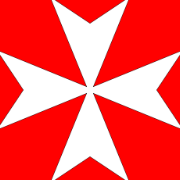



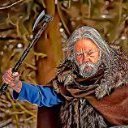

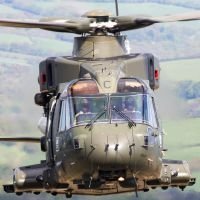

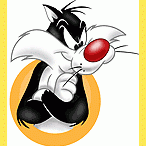


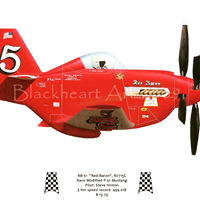
.thumb.jpg.d3635a7ef6507d35f372dd09671fe96f.jpg)

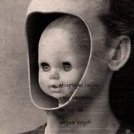

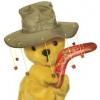

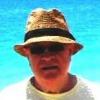
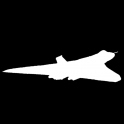
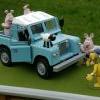
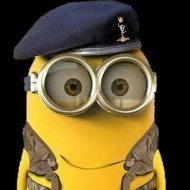

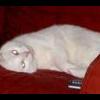
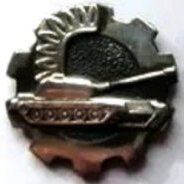

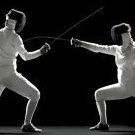
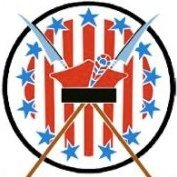

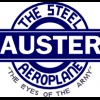
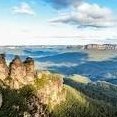

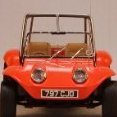
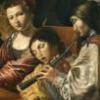
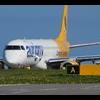


.thumb.jpg.b4a5069fd2c2dd5708ce1694345c5b11.jpg)